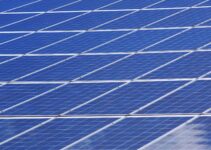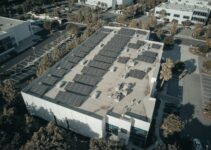The demand for electric vehicles is on the rise, and Tesla has emerged as a market leader in this space. With their sleek designs, impressive performance, and environmentally friendly features, Tesla cars have become a popular choice for many eco-conscious consumers.
One of the key features of Tesla vehicles is their ability to be charged using solar energy. In this article, we will explore the ultimate solution to the question, “How many solar panels can charge a Tesla?”
The Impact of Solar Panels on Tesla’s Charging Time
Solar panels play a crucial role in charging a Tesla car. By harnessing the power of the sun, solar panels can convert sunlight into electricity, which can then be used to charge the car’s battery. The number of solar panels directly affects the charging time of a Tesla vehicle.
How many solar panels are needed to charge a Tesla?
The optimal number of solar panels necessary to charge a Tesla depends on several factors, including the car’s battery capacity, the amount of sunlight available, and the desired charging time.
Determining the Optimal Number of Solar Panels for Efficient Charging
Calculating the optimal number of solar panels for efficient charging involves considering the car’s battery capacity and the average amount of sunlight available in your location. To determine the number of solar panels required, you need to divide the car’s battery capacity by the average daily solar energy production per panel.
Exploring the Relationship Between Solar Panel Output and Tesla Battery Capacity
The output of solar panels is measured in watts, while the capacity of a Tesla car’s battery is measured in kilowatt-hours (kWh). The relationship between solar panel output and Tesla battery capacity is important to understand when determining the number of solar panels needed.
On average, a single solar panel produces around 250 to 400 watts of power. Meanwhile, a Tesla Model S has a battery capacity of approximately 75 kWh. By dividing the battery capacity by the output of a single solar panel, you can estimate the number of panels required.
Factors to Consider When Calculating the Required Solar Panels for Tesla Charging
Calculating the required number of solar panels for Tesla charging involves considering various factors, including:
- The average daily solar energy production per panel
- The average daily energy consumption of the car
- The desired charging time
- The parking space available for solar panel installation
By taking these factors into account, you can determine the optimal number of solar panels needed to charge your Tesla efficiently.
Maximizing Solar Energy Utilization for Tesla Charging Efficiency
Maximizing solar energy utilization is crucial for charging your Tesla efficiently. Here are some tips to maximize solar energy utilization:
- Ensure proper positioning and orientation of solar panels to capture maximum sunlight.
- Regularly clean and maintain solar panels to remove any dirt or debris that may reduce their efficiency.
- Consider using solar battery storage systems to store excess solar energy for later use.
- Install a solar inverter to convert the DC power generated by solar panels into AC power compatible with your Tesla car.
The Role of Solar Panel Positioning in Tesla Charging Performance
The positioning of solar panels plays a crucial role in maximizing Tesla charging performance. Proper positioning ensures optimal sunlight exposure, resulting in increased energy production.
How does solar panel positioning affect Tesla charging performance?
The angle and orientation of solar panels significantly impact their performance. For maximum energy production, solar panels should be positioned at an angle that aligns with the latitude of your location. Additionally, they should face south in the Northern Hemisphere and north in the Southern Hemisphere.
Expert Advice: How Many Solar Panels Can Charge a Tesla?
To determine the number of solar panels required to charge a Tesla efficiently, it is recommended to consult a solar energy professional. They can assess your specific requirements, consider factors like energy consumption and sunlight availability, and provide expert advice tailored to your needs.
Frequently Asked Questions?
Q: How many solar panels are needed to charge a Tesla Model 3?
A: The number of solar panels needed to charge a Tesla Model 3 depends on factors such as the car’s battery capacity, solar panel output, and desired charging time. Consulting a solar energy professional can help determine the optimal number of panels for your specific needs.
Q: Can I charge my Tesla using a single solar panel?
A: While it is technically possible to charge a Tesla using a single solar panel, it may not provide sufficient power to charge the car efficiently. Multiple panels are typically required to generate enough electricity to meet the car’s charging needs.
Q: Can I use a solar-powered charger for my Tesla?
A: Yes, you can use a solar-powered charger for your Tesla. By connecting your car to a solar-powered charger, you can charge your Tesla directly using solar energy, reducing your reliance on the grid and minimizing your carbon footprint.
Q: Are there any government incentives for installing solar panels to charge a Tesla?
A: Depending on your location, there may be government incentives, such as tax credits or rebates, for installing solar panels. It is advisable to check with local authorities or consult a solar energy professional to explore available incentives.
Q: Can I charge my Tesla with solar panels during cloudy or rainy days?
A: While solar panels are less efficient during cloudy or rainy days, they can still generate some electricity. However, if sunlight is limited, it may take longer to charge your Tesla fully. In such cases, having a solar battery storage system can help store excess solar energy for use during low sunlight periods.
Q: Can I sell excess solar energy generated from charging my Tesla back to the grid?
A: Depending on your location and local regulations, you may be able to sell excess solar energy back to the grid. This process, known as net metering or feed-in tariff, allows you to earn credits or receive payments for the surplus energy you generate.
By considering the factors mentioned above and consulting with experts, you can determine the optimal number of solar panels required to charge your Tesla efficiently. Embracing solar energy for Tesla charging not only reduces your environmental impact but also provides a sustainable and cost-effective solution for your transportation needs.






